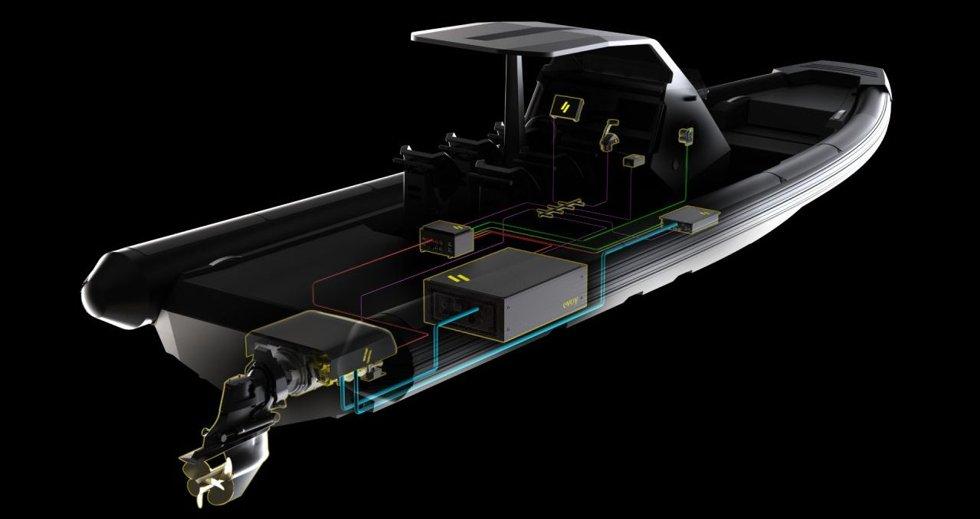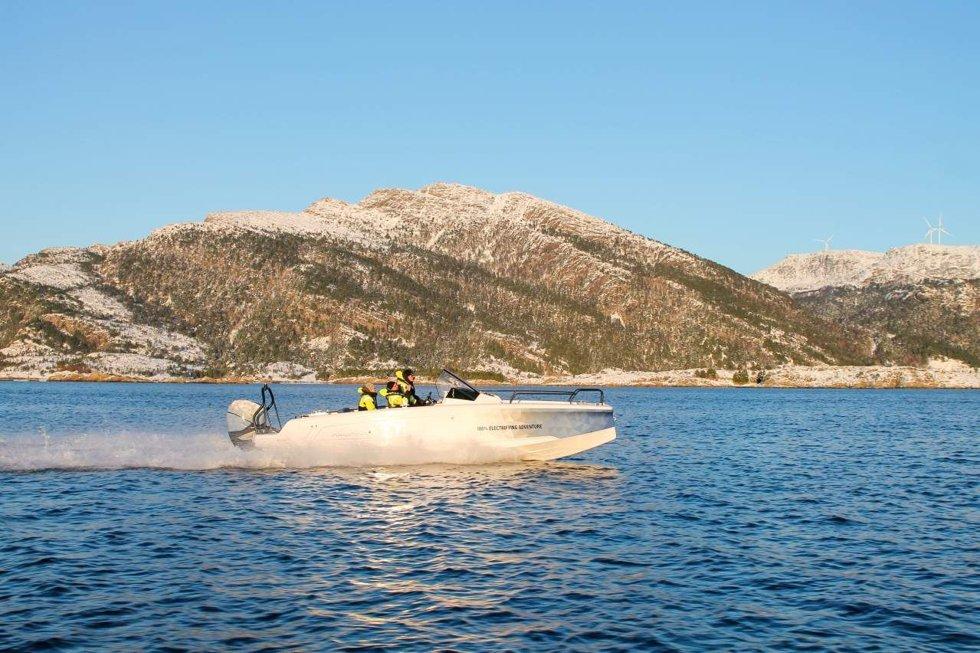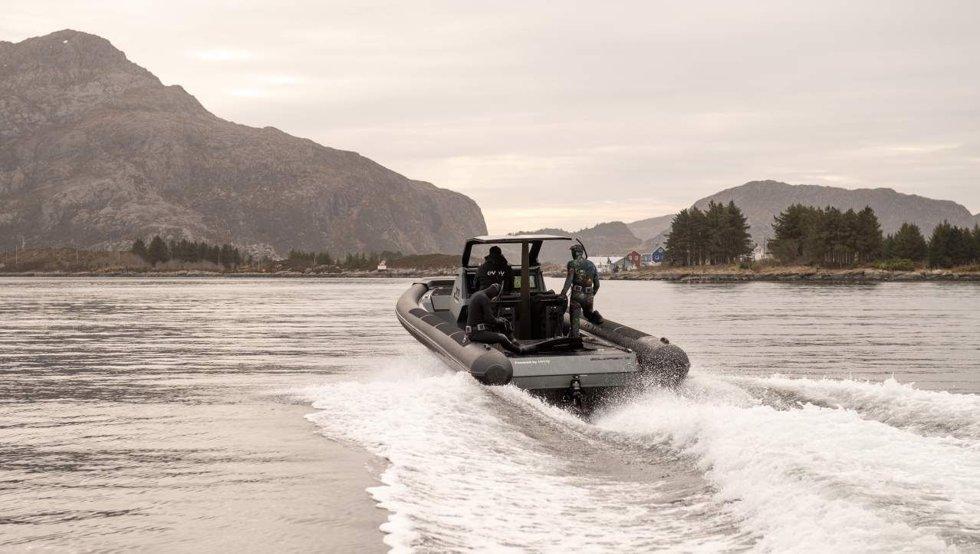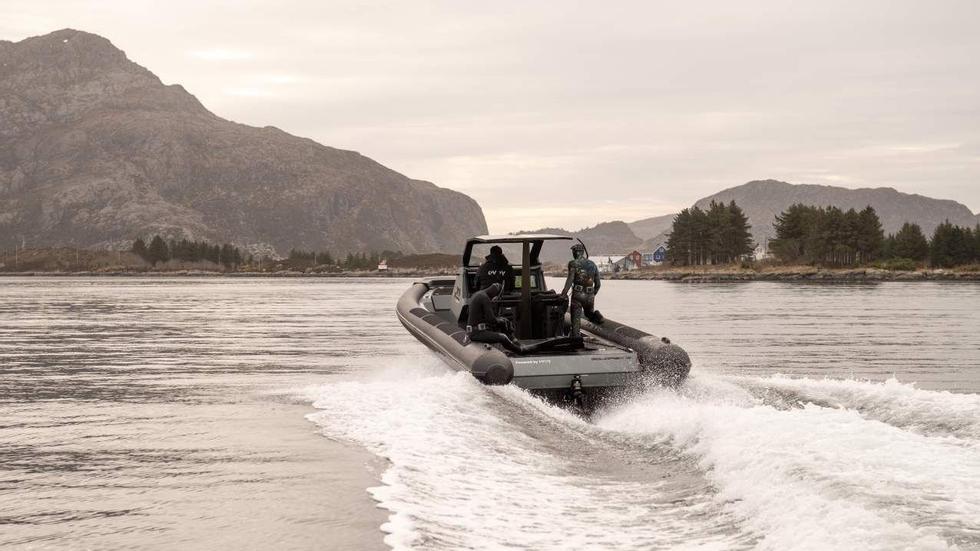This article was first published in Finance Motor.
BOAT: It is not only the car industry that faces increasingly tougher emission requirements. At several lakes further south in Europe, there are plans to introduce such strict requirements for both emissions and sound levels that it will be difficult to use traditional boat engines.
The Norwegian company Evoy believes they have the solution in the form of electric propulsion systems for boats, both for inboard and outboard mounting.
Goldfish X9 Elektrik should be able to go 25 nautical miles with a cruising speed of 35 knots, but that increases significantly if you throw out fishing line and do a bit of 4-5 knots. Photo: Evoy
800 hester
Evoy was founded in 2018 by Leif Stavøstrand and his father in Florø, and currently has 40 employees. Norske Goldfish has developed a version of their X9 model equipped with an Evoy Hurricane inboard engine that produces 300 kW, or 400 HP.
The system that has 800 volts internally must be able to produce 800 HP maximum. It is equipped with two batteries of 63 kWh gross, and this should enable the boat to travel 25 nautical miles at a cruising speed of 35 knots.

The Goldfish X9 with an electric propulsion system from Evoy can also be equipped with a petrol or diesel-fired generator to increase the available range. Photo: Evoy
Angst midtfjord
This is probably what for many is the biggest concern when it comes to trying out electric boating. If range anxiety strikes midfjords, many people may feel a bit of longing for a good old-fashioned diesel.
High speed in a boat requires a good deal more energy than high speed on the road, and Evoy states that at speeds of around five knots, the range will increase to between 50 and 100 nautical miles. The reason for the relatively large interval must be that factors such as wind, current and wave height are difficult to calculate, and will affect the range quite strongly.

There will eventually be stricter requirements for emissions and sound, which could make the Goldfish X9 with an electric drivetrain a good alternative. Photo: Evoy
Hybrid at sea
A type of car that has been popular in this country and is still doing well in other countries are hybrids, in both rechargeable and self-charging versions. The advantage is, as most people know, that if you run out of electricity, you can continue driving on petrol or diesel. Evoy describes that they can also supply what they describe as a range extender for the electric boats, which run on petrol, diesel or biofuel.
In this sense, boating becomes a little less green, but in return it probably feels a lot safer to put out to sea. Evoy writes that 400 superchargers have been set up along the coast between Arendal and Gothenburg in recent years, so in theory it should be possible to find a free connection when the evening comes.

The Finnish manufacturer Axopar has also taken an interest in the Norwegian company Evoy, and has mounted the company’s 300 HP electric outboard motor on a 23-footer. Photo: Finnish
Wireless solution
At this year’s boat fair in Düsseldorf, there was an Axopar boat on display with an electric outboard motor, and it had the same type of charging socket as on electric cars mounted on the inside of the hull. Charging power is not stated, but Evoy describes that a full charge can take somewhere between 30 minutes and one hour. They estimate that the batteries should have more than 70 percent of their original capacity available after 3,000 charge cycles.
The electric powertrain is connected to digital displays on the dashboard, and has
electronic control systems in the same way as modern electric cars. In Düsseldorf there was an opportunity to take a look into the battery box, where a communication unit connected to Evoy’s servers had been installed. The marketing manager at Evoy, Marte Rostrup Hofset, writes that if an error should occur, they will be able to solve the problem online in 90 percent of the cases.

Evoy installs modems in all boats, such as this Goldfish X9, and says they will normally be able to solve 90 percent of all possible errors or problems wirelessly. Photo: Evoy
Bigger selection
Evoy envisages a development going forward towards 2030 where the big cities will have electric ferries and water taxis, and most workboats will run on batteries. It may well be that development is moving in that direction, while more efficient and cleaner diesel and petrol engines are constantly being developed. Hydrogen fuel cells are also an alternative that is suitable for certain types of boat, and the advantage of them is that they are quiet, about as fast to fill up as a boat with a diesel engine, and that they only emit water.
It is difficult to predict, especially about the future, is a good old saying. Boating will probably see a development that is somewhat similar to what has been seen on the road, with a larger selection of different solutions.
2023-04-23 11:22:28
#Strict #requirements #boat #engines


